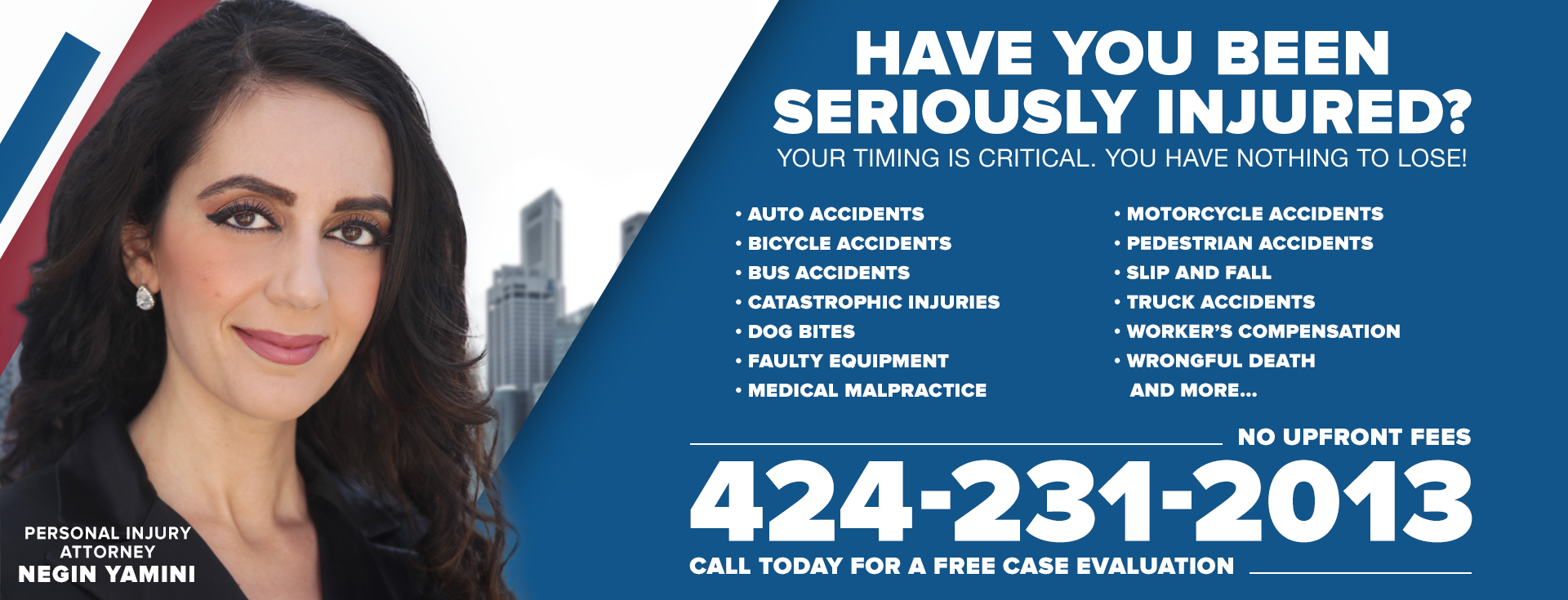Electric scooters provide an efficient and environmentally friendly means of moving around the busy cities of California. With their popularity on the rise, accidents involving scooters have increased, in many cases due to riders' unawareness of the particular traffic laws that apply to their usage. This convenience is, however, subject to significant responsibilities, which are required by law. It is essential to follow these rules to prevent costly tickets and keep you, the pedestrians, and the motorists around you safe.
An e-scooter is not a moped. It has regulations to legally avoid injuries and make using such devices a part of the traffic stream. This guide explains the key laws you should adhere to regarding helmet use, speed limits, and where you can ride. The proactive measure towards responsible ridership is to know these rules before you ride. With this knowledge, you may ride safely and responsibly, making the road safer for all users.
The eight rules that make up the basis of responsible ridership are listed below:
-
Driver's License or Learner's Permit Required, California VC 21235
You cannot just jump on an e-scooter and ride off into the sunset without the proper credentials. The legislation is clear and meant to provide all operators with basic knowledge of traffic regulations.
California Vehicle Code 21235(d) requires all e-scooter operators to have a driver's license or an instruction (learner's) permit to operate a motorized scooter on public roads. This condition highlights that an e-scooter is not a toy but a vehicle that shares the road with other traffic. The idea behind this law is to ensure that all riders have successfully passed a test that shows they have a basic knowledge of road signs, right-of-way, and safe operation.
The good news is that you do not require a special license, such as a motorcycle endorsement, to ride an e-scooter. The legal requirement is any valid California driver's license of any class. This provision enables e-scooters to be available to a broad licensed driver category.
If you are above 16 years old, you must have a license or permit when riding an e-scooter on the public roads. This universal requirement ensures that every rider has a standard knowledge of road laws. The violation of this rule may lead to a traffic ticket (approximately $200).
-
Helmet Mandate for Minors, California VC 21235
Among the most serious risks of any two-wheeled vehicle are head injuries, and the California law is stringent in safeguarding its younger riders.
California VC 21235(c) requires that any e-scooter operator under 18 wear a bicycle helmet with safety standards. The helmet should also be properly worn on the head of the rider and firmly fixed in use. Failure to follow this law may result in a fine.
A change in the legislation repealed the requirement of helmet use by adult riders (18 and over). This was done partly to reflect the realities of scooter-sharing schemes, where riders may not have a helmet. Nevertheless, safety is not always equal to legality.
Safety experts and scooter-sharing companies such as Bird and Lime recommend that all riders wear helmets to cushion them against severe head injuries, regardless of age. Even a low-speed fall can result in a traumatic brain injury with lifelong consequences. It is a personal risk to ride without one.
A traffic ticket is the penalty for riders below 18 years who cause an accident. The penalty for this offense is usually between $197 and $200. This monetary fine is a deterrent and supports the gravity of the safety requirement.
-
Maximum Speed Limit of 15 MPH, California VC 22411
Although e-scooters may seem quick and agile, they have a minimal speed limit to guarantee the safety of the rider and the surrounding population.
According to the California Vehicle Code 22411, a person must not ride a motorized scooter above 15 miles per hour. The law is meant to decrease the chances of high-speed accidents, as e-scooters do not have the protective features of bigger vehicles. This speed limit balances efficiency with a rider’s ability to respond to immediate dangers, such as a car door opening or a pedestrian stepping into the path.
You should never exceed the 15 mph speed limit, even in a bike lane on a street where motor vehicles can drive at 25 mph or more. Scooter-sharing companies tend to construct devices with governors that restrict the maximum speed to 15 mph. Nevertheless, as the operator, you must regulate your speed, particularly when going downhill, since momentum may make you exceed the legal speed limit.
If a law enforcement officer spots you riding an e-scooter at a speed exceeding 15 mph, they can stop you and give you a ticket. This violation is expensive and may attract a fine of up to $250.
-
Where You May and May Not Ride, California VC 21229
One of the most important things about riding an e-scooter safely and legally in California is knowing where it is allowed to ride. The regulations avoid scooters, pedestrians, and vehicles that move quickly.
he law emphasizes that e-scooter riders should use dedicated bicycle infrastructure to keep them separate from both pedestrian and vehicle traffic.
Bike Lanes are Your Friend , California VC 21229
California Vehicle Code 21229 requires that when there is a Class II bike lane on a roadway, you are required to use it. A Class II bike lane is a one-way lane along a side of a road marked with a solid white line and bicycle symbols. It is one of the foundations of e-scooter safety, giving you a specific area to ride.
The law gives some practical exceptions enabling you to leave the bike lane. You can leave the lane when you have to pass another rider or pedestrian, to take a left turn, to avoid debris or other dangerous situations, or when you are approaching a place where a right turn is permitted.
Riding on the Road, California VC 21228
You can ride on the street, but only in certain circumstances when there is no bike lane.
It is against the law to ride an e-scooter on a road with a posted speed limit of 25 miles per hour, unless you are in a Class II or Class IV bikeway. This limitation eliminates the risk of collision between the slow-moving scooters and faster traffic. By ordinance, local authorities can allow scooters to be used on roads with a speed limit of up to 35 mph, but you must check local regulations.
Per California VC 21228, you should ride as near as practicable to the right-hand curb or edge of the roadway when riding on the street. This keeps you out of the mainstream of traffic. Exceptions are made to pass, prepare to turn left, or to avoid hazards.
Sidewalks Off-Limits, California VC 21235
This is among the most commonly misinterpreted and broken e-scooter laws. Pedestrians should use sidewalks, and you should never ride your e-scooter on them.
California VC 21235(g) prohibits operating e-scooters on sidewalks to avoid pedestrian injuries. An e-scooter is fast and heavy, which can threaten pedestrians. This is especially true for vulnerable individuals such as children, the elderly, or those with disabilities. You can only legally be on a sidewalk with an e-scooter when entering or exiting an adjacent property or parking the device.
Likewise, you should never ride across a crosswalk; the law states that you should dismount and walk your scooter across. A ticket of approximately 200 dollars may be issued in case of violating the sidewalk or crosswalk rule.
-
No Passengers, California VC 21235
The e-scooters are constructed and manufactured with only one person in mind, and the law acknowledges this major safety constraint.
According to CVC 21235, it is unlawful to transport a passenger on an e-scooter. Such vehicles, commonly referred to as tandem rides, are not allowed. The handlebars and floorboard are constructed to fit one individual.
Riding on your scooter with another person is a dangerous situation. The additional weight and the balance change make the scooter unstable and challenging to control, significantly increasing the risk of falling or a crash. The ban on passengers is a simple regulation that helps to avoid accidents that can be easily prevented.
-
Obey All Traffic Laws, California VC 21221
One of the primary rules of e-scooter use in California is that you are treated as the driver of any other vehicle.
California Vehicle Code 21221 provides that all individuals riding a motorized scooter are entitled to all the rights and are subject to all the provisions of the driver of a vehicle. This implies that you are not only a rider but also a vehicle operator as far as the law is concerned.
You should halt at red lights and stop signs, give the right-of-way where needed, and obey all traffic signs as a car would. This is necessary to make the traffic system predictable and safe.
It is against the law to ride an e-scooter under the influence of drugs or alcohol. Although the penalties are not as severe as those for a regular vehicle DUI, a conviction is a misdemeanor punishable by a fine of up to $250. There is no specific BAC level that constitutes impairment, as there is with a car DUI; it is unlawful to ride a scooter when you are under the influence to any extent that can impair your ability to operate the scooter safely.
-
Dismount and Walk for Left-Hand Turns, California VC 21228
Turning left on an e-scooter is a peculiar process to ensure your safety.
When on your e-scooter, you cannot make a typical vehicular left turn in the traffic lane. The law mandates a much safer pedestrian-type maneuver, as described in CVC 21228.
You should ride to the other end of the intersection, park at the right curb, get off your scooter, and then cross the street on the crosswalk. This rule saves you the need to cross several lanes of possibly high-speed traffic on a low-speed vehicle.
-
Riding at Night and Equipment Requirements
If you intend to ride your e-scooter at night, you should ensure it is adequately equipped with lights to see and be seen.
According to California Vehicle Code 21223, every scooter used at night should be equipped with a lamp that produces a white light to illuminate the road. This light should be seen at 300 feet in front and on the sides of the scooter. Instead, you can use a white lamp that satisfies the precise visibility requirement.
Along with the headlight, your scooter should also have a red reflector on the back that is visible at 500 feet in the direction of the headlights of a motor vehicle. You must also have white or yellow reflectors on both sides of the scooter, which can be seen at 200 feet. These reflectors ensure drivers behind and on the sides can see you well during low-light conditions.
California VC 21235(a) makes it unlawful to operate an e-scooter without a brake capable of causing a braked wheel to skid on dry, level, clean pavement. This will give you the required stopping power to respond to dangers.
What Is an Electric Scooter in California?
Before discussing the particular regulations of the road, it is essential to learn what the law defines as a motorized scooter. This distinction is important, as various models of two-wheeled vehicles, including mopeds and e-bikes, are regulated by entirely different rules.
California Vehicle Code 407.5 defines a motorized scooter as a two-wheeled vehicle with handlebars and a floorboard to stand on during riding. An electric motor powers the scooter. The law also recognizes that the device can have a seat that does not obstruct your capacity to stand and ride and can also be human-powered.
Distinction from Mopeds and E-Bikes
It is crucial not to mix an e-scooter with a moped or a motor-driven cycle. An example is mopeds, which are limited in engine size and usually need an M1 or M2 motorcycle license to ride. Conversely, California VC 21224 e-scooters are not subject to special DMV registration or insurance. Knowing that your e-scooter is in a special legal category will help you adhere to the correct set of laws specific to these vehicles.
The Importance of Obeying the Law
One of the most basic requirements of any rider is to learn the rules of e-scooters. The laws are not random; they are made with the safety of the people in mind as the main aim.
Accident and Injury Prevention
The statistics of e-scooter accidents emphasize the importance of educating riders and following traffic regulations. There are rules about the speed limit, the use of helmets, and the areas where you can ride to reduce the chances of a collision and the extent of possible injuries. By adhering to these guidelines, you will play an active role in making the environment safer for you and all other road and pathway users.
Avoiding Costly Traffic Tickets
In addition to the safety concerns, the financial implications of breaking the e-scooter laws can be substantial. Law enforcement officers issue traffic tickets, and the fines may be high. For example, an infraction like speeding or riding on the sidewalk may lead to a ticket that costs more than 200 dollars or even more. Riding under the influence is punishable by a fine of up to $250. The easiest method to avoid these unnecessary and costly penalties is to comply with the law.
Punishments for Breaking E-Scooter Laws
Violating the rules of e-scooter use in California may result in more than a warning. The fines are meant to enforce safe riding habits and carry both financial and legal consequences.
Fines and Citations
As stated, hefty fines accompany certain violations. Riding without a helmet (for minors), speeding, and riding on the sidewalk may lead to a fine of about $200–250. The penalty for a DUI on a scooter is up to $250. These fines are a direct monetary deterrent to law violations.
Possibility of Greater Liability in an Accident
In addition to fines, breaking the traffic law may lead to serious consequences in case of an accident. If you are in an accident, and it is determined that you are violating an e-scooter statute, you may be partially or fully responsible. This may impact insurance claims and any possible legal action, and it will be more challenging to get compensation for injuries or damages, even in cases where a second party was also negligent.
Locate a Los Angeles Personal Injury Attorney Near Me
Electric scooters provide great freedom and require great responsibility. The adoption of the e-scooter laws in California is not only about evading fines but also about establishing a safer transportation culture for all.
Before you ride, the main points to remember are that you need a valid driver's license, must not exceed 15 mph, and must wear a helmet if you are under 18. Use bike lanes, avoid using sidewalks, do not carry passengers, and follow all traffic regulations as a car would. Responsible ridership is an attitude of mindfulness and courtesy.
Even the most cautious riders can be hurt by the carelessness of another. If you have an e-scooter accident, the Los Angeles Personal Injury Attorney team can assist you in knowing your rights. To discuss your case with our experienced legal team, please call us at 424-231-2013.
























